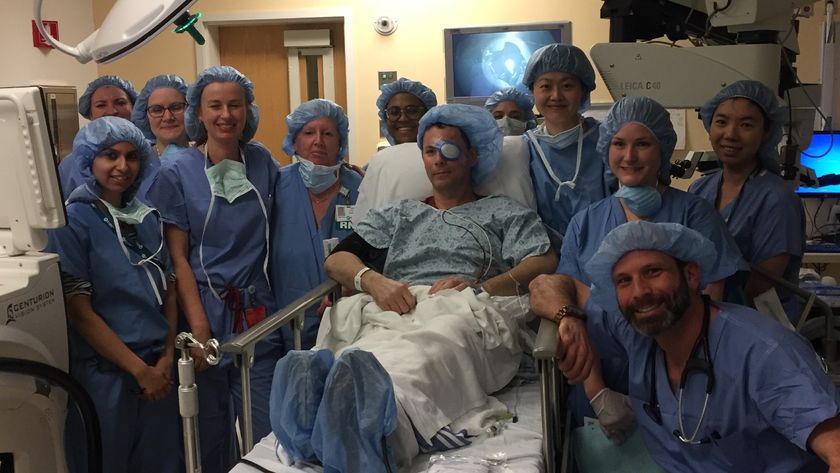Historic Face Transplant Includes Teeth and Bone

Surgeons have performed what they say is the most extensive full face transplant to date, on a 37-year-old man who lost a large portion of his face in a gun accident 15 years ago.
Richard Lee Norris, 37, of Hillsville, Va., lost his lips and nose in the 1997 accident and had worn a mask since then.
The novel surgery, performed at the University of Maryland Medical Center, took 36 hours to complete, and Lee is recovering faster than expected, surgeons said.
"This is truly an amazing feat," Dr. E. Albert Reece, vice president of medical affairs at the University of Maryland, said at a press conference detailing the operation, which was performed six days ago.
Surgeons transplanted a donor's upper and lower jawbone, teeth, a portion of the tongue, and soft facial tissue from the hairline down to the collarbone.
Since then Norris has performed activities such as shaving and brushing his teeth, his surgeons said during the press conference.
"I think it's extraordinary," said Dr. Seth Thaller, professor and chief of plastic surgery at the University of Miami Miller School of Medicine, who was not involved in Norris' surgery. Twenty-two face transplants have been performed previously worldwide, but most of these involved only soft tissue and not teeth and bone, Thaller said.
Sign up for the Live Science daily newsletter now
Get the world’s most fascinating discoveries delivered straight to your inbox.
"Basically they've restored the entire facial function and form," he said.
There have been concerns in the past about the psychological consequences of receiving a new face. Before the surgery, Norris underwent rigorous psychological testing to ensure he was a good candidate for the surgery, his surgeons said.
By transferring the jawbone, the surgeons hope Norris will require fewer immunosuppressive drugs, a result that has been seen in animal models of this procedure, said Dr. Stephen Bartlett, chairman of the Department of Surgery at the University of Maryland School of Medicine. The researchers don't know exactly what is responsible for this phenomenon, but they think it has to do with the transfer of a large porition of bone that has its own blood supply, Bartlett said. In about six months to a year, the research team may begin to see if Norris' dose of immunosuppressive drugs can be lowered without the risk of organ rejection. "We were really quite surprised how low we were able to go," in the animal models, Bartlett told MyHealthNewsDaily.
The surgeons plan to keep Norris in the hospital for about a month to be monitored.
Pass it on: A 37-year-old man who lost a large portion of his face in a gun accident 15 years ago no longer has to wear a mask after receiving an extensive face transplant.
Follow MyHealthNewsDaily staff writer Rachael Rettner on Twitter @RachaelRettner. Find us on Facebook.

Rachael is a Live Science contributor, and was a former channel editor and senior writer for Live Science between 2010 and 2022. She has a master's degree in journalism from New York University's Science, Health and Environmental Reporting Program. She also holds a B.S. in molecular biology and an M.S. in biology from the University of California, San Diego. Her work has appeared in Scienceline, The Washington Post and Scientific American.











